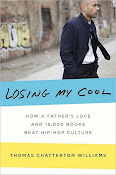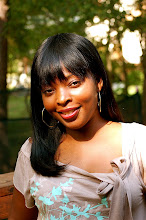
Lena Horne taught me how to write.
It was back in 1997, when she was about to celebrate her 80th birthday, and the lovely Ms. Horne granted me, then a young political-turned-entertainment journalist, an interview for a cover story in the New York Daily News’ features section.
Thing is, she would only do it via the phone, and she would talk to me for 10 minutes only. Ten minutes. For a 4,000-word story that was due to my tough-as-nails/take-no-shorts editor the very next day.
And so there I sat, staggered: How on earth was I going to get a trailblazer, a legend, an icon, to say something meaningful and fresh about her almost 70-year long career—over the telephone in 10 minutes? And more importantly, how would I get any kind of meaningful story out of it—much less a 4,000-word composition meant to honor and commemorate this woman, whose elegance and grace in the face of extreme adversity brought great dignity to African Americans on the big screen? I mean, I’d spent an afternoon at Ruby Dee and Ossie Davis’s house, pouring through old newspaper clippings and playbills and listening to them trade stories about the industry; I’d talked to George Clooney for more than an hour about his aunt, Rosemary Clooney and that thing he does when he’s nervous or being coy; I’d traveled to the bowels of Shaolin (that’s Staten Island to you New York hip hop novices) to interview the Wu-Tang Clan (and caught a contact high in the process). How would I do the divine Ms. Horne justice?
In a moment of journalistic clarity (and out of sheer desperation), I decided to ask her a bunch of dumb stuff. Questions nobody probably ever dared ask her, but would adore knowing, like what was her favorite cartoon and if she listened to rap music and who her favorite modern-day film director was.
The result? The most amazing celebrity profile I’ve ever written—I won a feature-writing award for the piece—and certainly, of hundreds of interviews I’ve conducted during my almost 20-year journalism career, one of the most rewarding conversations I’ve ever had with a star. I’m grateful to Ms. Horne for making me stretch and reach and rise as a writer. But more, I’m grateful to her for standing upright—shoulders squared, chin up—and demanding respect—not just for herself, but for all of us black folk.
Lena Horne was, simply, divine.
When I got word that she passed yesterday at age 92, I went digging into my clip files for the story I wrote on her all those years ago. Here, an excerpt. It’s long—but worth the read… promise.

By Denene Millner
for the Daily News
June 22, 1997
So it’s settled, then.
Even the legendary singer Lena Horne, the American beauty for whom Max Factor once created a special shade of foundation, doesn’t understand the need for all those crazy products crowding the makeup counters and the bottoms of purses of baffled women across the land. Waterproof. Smudge-proof. Allergy-proof. Anti-age. Anti-wrinkle. Daytime shadows. Nighttime colors. Which to use? How do you use them?
“It must be terribly confusing,” she muses. “I don’t know why women haven’t gone crazy. I think you just have to look in the mirror and say, ‘Look, this morning I got a few more wrinkles, and there ain’t too much I can do about that.’”
A week and a day from age 80—her birthday is June 30—Ms. Horne doesn’t concern herself with such matters.
Maybe back in, oh, 1940 she gave a hoot. But it’s 1997, and she’s a tad too preoccupied with life and great-grands and the terrible twos and bad knees and Masterpiece Theatre to argue the merits of Maybelline Great Lash and Estee Lauder Advanced Night Repair.
Let’s say she’s enjoying the simpler things in life.
Lena Horne likes Bugs Bunny cartoons, day-old collard greens and cold asparagus tips out of the can, mystery novelist Ruth Rendell and Oprah—“especially her book thing.” She doesn’t drive, refuses to chase her 2-year-old great-grandson through the house, thinks “we need” Al Sharpton and Jesse Jackson and long ago forsook shopping for shoes because she’d rather somebody go “pick them up for me.”
She hasn’t a clue who the Wu-Tang Clan is, but knows about Snoop Doggy Dogg and actually likes the creator of gangsta rap, Ice T. She also digs Spike Lee, especially his “School Daze” and “Mo’ Better Blues”—“I love Denzel”—but doesn’t seem to be so moved by Woody Allen.
“I don’t dislike him,” she clips.
All that’s to say that the woman who for so long carried the burden of trying to change the (black)face of Hollywood is comfortable now—content. There are no more cold stages filled with bright lights and prying eyes, no more lonely days, lost battles and hopes deferred—no more grand songs or square-box images for this beautiful actress and singer to squeeze into.
Ms. Horne is a living legend, but every bit as ordinary today as any of you have ever been or could ever be.
For her, there is family.
There is a close-knit circle of friends.
There is freedom.
There is peace.
At (almost) 80, it is finally so.
“I tease her all the time,” her daughter, Gail Buckley, jokes. “She is the most housebound person. She’s a Cancer. Astrologically, she’s true to her sign… Ask Joyce Jillson; it’s a very family-oriented sign, and she’s very family oriented.
“One of the things I appreciate now and didn’t really appreciate before was that family always came first,” Buckley adds. “That is so today.”
Which is probably why the self-analysis Ms. Horne offers these days of her six-decade show-business career is so, well, simple—if it’s a simple word you’re looking for.
“I would have liked to have been one of those entertainers like, let’s see, maybe like… well, Bessie Smith was loved by a certain era. Aretha Franklin was loved by another,” Ms. Horne reflects. “Each era creates a new kind of thing that people are drawn to, and I don’t know if I fit into any of those things.
“I’ve been the weird one,” she adds quietly. “I’ve been more concerned about my relatives and family—always. I’ve been that way in an attempt to get into a circle of my own.”
That’s how she’d like to be remembered—for her closeness to family?
“Yes. The weird family girl.”
Odd. Lena Horne doesn’t think she fits into any kind of “era.”
Doesn’t she know?
When she appeared in the 1943 film “Thousands Cheer” draped around that white pillar—so elegantly gowned, with that beautiful, toothy smile outshining a thousand stars—she sang her way right into America’s consciousness and single-handedly made a most significant change in the face of Hollywood.
There was no handkerchief on this Negro woman’s head, no apron tied around this beautiful black woman’s waist—no yass’ms” falling off her ruby-painted lips, no babies being birthed by her delicate hands. She was a new kind of colored gal—one who, as her father, Teddy Horne, so poignantly pointed out to MGM head Louis B. Mayer, would rather hire a maid than play one (and could afford it, too).
No, she had the beauty, the class—hell, the dignity that had so long been denied to the more established actresses like Butterfly McQueen and Hattie McDaniel, who made their marks playing mammies. Here was this copper-toned siren with that long, pretty, “good” hair, looking just as sexy as any of Hollywood’s sexiest white women—Hedy Lamarr, Betty Grable and Rita Hayworth included.
With one three-minute number—“Honeysuckle Rose,” in “Thousands Cheer,”—Lena laid herself down and became the bridge over which hundreds of successful black actors and actresses walked to get to the dignified roles on the big screen. At the same time, blacks in general used Lena as a means of showing they were much more than the mammies and Toms America wanted them to be.
How could she not know that she too personified an era?
“She was a crossover diva,” says movie historian Donald Bogle, who, in his new book, “Dorothy Dandridge: A Biography,” tells of the role Horne’s career played in her rival’s success. “The movies put her on the map, and her appearance indicated a shirt in images for African-American women. She really did become the first black woman in Hollywood to be fully glamorized by a major film studio.”
But it’s not just black America that Lena Horne affected. No, it was much more than that. White people adored her. In the 40s. When liking black people wasn’t exactly at the top of everyone’s list. Lena was all right, though—for as black in spirit as she was, she appeared to be one of those “safe” Negroes, an amorphous woman who was so light-skinned, it was that much easier for whites to get past the fact that she wasn’t one of them. She wasn’t threatening. She was beautiful.
It is no wonder, then, that the first black female Hollywood star would look as close to a white person as possible; she was black enough for black folks to be proud of and light enough for whites to forget her race.
Through all the manifestations of American culture, Lena navigated an extremely rocky road paved with harsh racist and sexist attitudes—arriving at her 80-year-old self a woman who crosses racial boundaries and generational ones, too. One is hard-pressed to find a seeing, hearing, sane and rational person over age 20 who doesn’t at least know a few tidbits about this lady.
Go ahead, mention her name: Guaranteed you’ll hear one of two things within the first few words—“God, she’s beautiful,” or “Stormy Weather.” This country knows who she is and cares about her deeply. Her music became a great unifier over the years, while her stories of struggles against racism and sexism, in both Hollywood and the United States, have been a salve for all souls. After all these years, she is still the symbol of beauty and dignity and class that was wrapped around that pillar 54 years ago.
That is, perhaps, why Americans, after all these years, are still infatuated with Ms. Lena Horne. She’s bigger than an “era.”
Surely, she must know.
































Another torchbearer gone, but not forgotten. I thoroughly enjoyed reading the excerpt from your piece on Lena Horne. I hope Hollywood fast tracks that biopic they've been delaying.
ReplyDeleteLena Horne R.I.P.
ReplyDeleteWow. What a beautiful story for a gorgeous woman.
ReplyDeleteIf you have it, I'd love the link to the full article.
ReplyDeleteI have always known her to be a gracious, beautifully-willed, visionary thanks to my parents. From a young age they helped me be aware of this icon.
ReplyDeletePlease link to the full article.
@Jonez and Kia: How I wish there was a link to the article... it's not anywhere to be found on the internet. It was written back in 1997, way before newspapers had electronic filing systems. Newspaper clips were saved literally in folders in filing cabinets, under various subjects—Lena Horne, jazz singers, divas. I know. The stone ages.
ReplyDeleteI have the same system in my house for all of my old newspaper and magazine clips... I dug this one out of my files and typed in the beginning of the story. One of these days, when I have time, i'll type in the other 3,000 words...
Greeat blog you have here
ReplyDelete